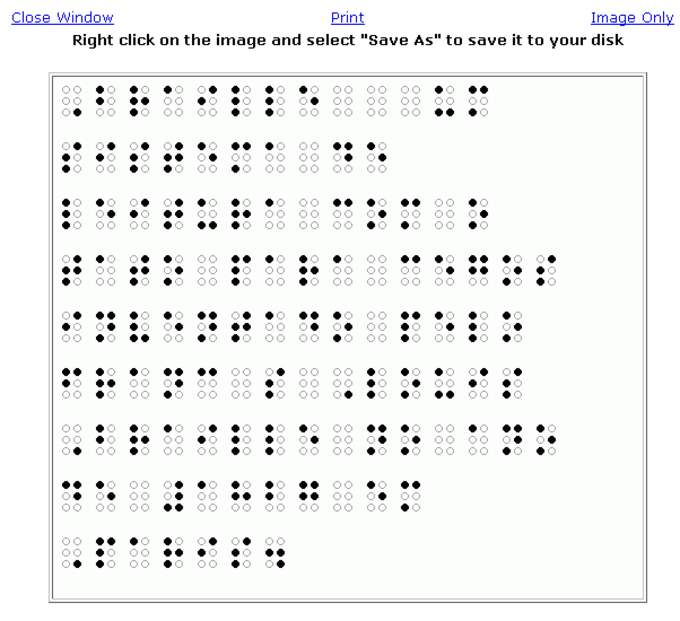

A third criterion is then added to ensure that the detector has only one response to a single edge. We define detection and localization criteria for a class of edges, and present mathematical forms for these criteria as functionals on the operator impulse response. These goals must be precise enough to delimit the desired behavior of the detector while making minimal assumptions about the form of the solution. The success of the approach depends on the definition of a comprehensive set of goals for the computation of edge points. This paper describes a computational approach to edge detection. Conclusion: The experiment showed that the proposed method obtained very good results but it requires more testing on different scanned Braille document images. Results: Braille dots composing characters on both singlesided and double-sided documents were automatically identified from those grids with excellent accuracy. Segmented Braille image was used to form a grid that contains recto dots and another one that contains verso dots. The core of the proposed method was the use of stability of thresholding with Beta distribution to initiate the process of thresholds estimation. We assumed that a mixture of Beta distributions could model the histogram of a scanned braille document. Approach: This study presents an algorithm for detecting dots composing braille characters in an image of embossed braille material obtained by an optical scanner. Optical Braille Recognition (OBR) offers many benefits to Braille users and people who work with them. Problem statement: Braille is a tactile format of written communication for people with low vision and blindness worldwide.

The system was able to recognize Single sided Sinhala Braille with an average accuracy of 91.2%. The prototype Sinhala Braille Translator was tested on documents collected from Library, University of Kelaniya. Finally decoded characters are normalized to Sinhala text which is in human understandable form. Artificial Neural Networks (ANN), Support Vector Machines (SVM) and K-Nearest Neighbour (K-NN) classifiers were tested on the sample Braille documents. Then the extracted features are used to train the classifier to predict the Sinhala character.

For each and every character, feature extraction is carried out identifying main dots. Then by applying edge detection techniques braille documents are subjected to segmentation. Noise removal is done using gray scaling and the noise filtered image is converted to a threshold image. It takes the scanned braille documents using normal flat-bed scanner and those images undergoes pre-processing steps. The system is capable of recognizing an image of embossed Sinhala Braille and then converts it to Sinhala text. The decoded Sinhala characters are further normalized to Sinhala text that is legible for a sighted person. The system is capable of extracting Braille characters from a Braille document followed by decoding them into Sinhala characters. This paper addresses this communication gap between the blind and sighted people using the Sinhala language. A communication gap exists among the blind and the Braille illiterate sighted people in the Sri Lankan society as written communication is restricted. However, OBR for Sinhala Braille has not been attempted previously. Motivation to understand Braille codes by sighted people has encouraged the development of Optical Braille Recognition (OBR) for different languages across the World. It is a time consuming and labor intensive task. Typically, editing and reprinting of Braille that are embossed on paper are done manually. Braille is one of the most valuable and indispensable method used for written communication by the blind.


 0 kommentar(er)
0 kommentar(er)
